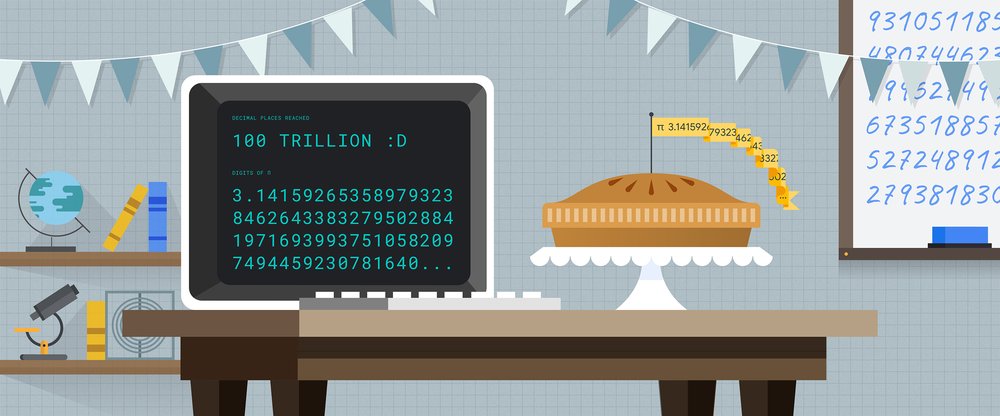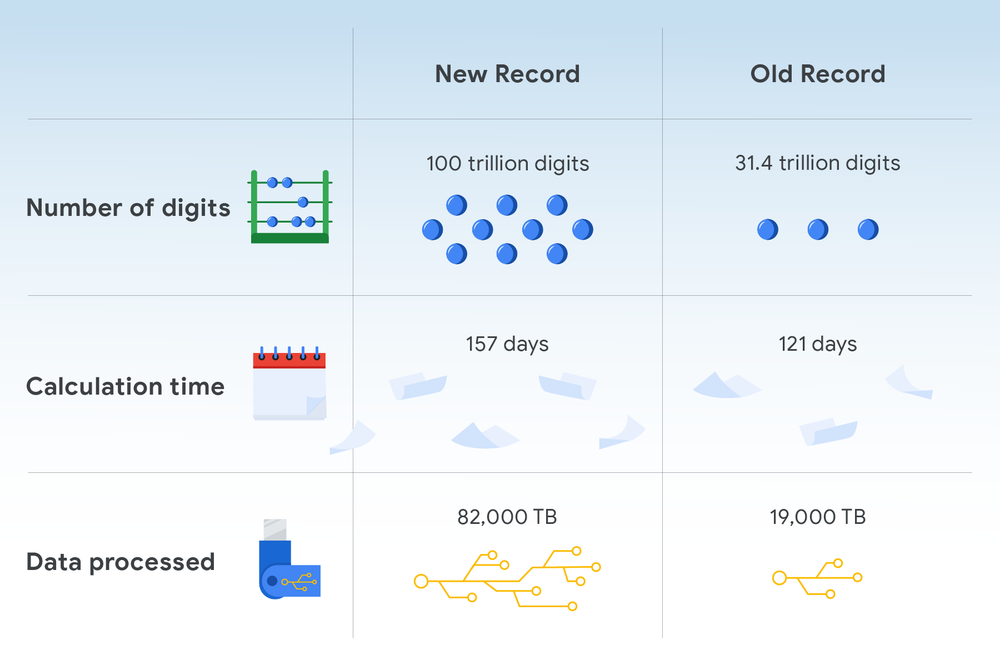
Developers have set a new record in the endless quest to accurately calculate pi.
A team led by Google Cloud’s Emma Haruka Iwao found 100 TRILLION digits of the mathematical constant — smashing the previous benchmark of 31.4 trillion.

Brainiacs have sought to extend pi for millennia, but in recent years the digits have increased exponentially.
Advances in computing are now causing records to regularly tumble.
A 2019 milestone that was also set by Iwao was surpassed within months. That landmark was then overturned the next year, before Iwao reclaimed her crown this March.

Iwao’s team used the y-cruncher program and Chudnovsky algorithm.
Their calculation ran for 157 days before finding the 100-trillionth decimal place — a 0.
They then verified the final numbers with the Bailey–Borwein–Plouffe formula.
In total, the process used a whopping 515 TB of storage and 82 PB of I/O.
The feat clearly required immense time and resources — which begs the question, what was the point?

Pi serves many practical purposes. The number is used in countless formulas for real-world applications, from building the Great Pyramid of Giza to operating Martian robots,
“Knowing pi to some approximation is incredibly important because it appears everywhere, from the general relativity of Einstein to corrections in your GPS to all sorts of engineering problems involving electronics,” Jan de Gier, a professor of mathematics and statistics at the University of Melbourne, told the Guardian last year.
Yet these myriad uses rarely require approximating pi to 10 decimal places — let alone 100 trillion.
Even NASA needs no more than 15. The agency’s Jet Propulsion Laboratory said its highest accuracy calculation — which is used for interplanetary navigation — is 3.141592653589793.
Congratulations, @Yuryu, on your record-breaking calculations of pi to 100 trillion digits. It’s a true testament to how Google Cloud’s infrastructure can help push the boundaries of scientific experimentation. https://t.co/6IGViMjg3v
— Thomas Kurian (@ThomasOrTK) June 8, 2022
In Google’s case, however, there is a less practical benefit: showing off the company’s tech — and using amenable hacks to promote it. (Hiya!)
Iwao admits as much.
“As a developer advocate at Google Cloud, part of my job is to create demos and run experiments that show the cool things developers can do with our platform; one of those things, you guessed it, is using a program to calculate digits of pi.” she said.
The Big G has provided a long list of ways that Google Cloud features made the record possible, but I won’t mention them until I get a check in the post.
Congratulations, @Yuryu, on your record-breaking calculations of pi to 100 trillion digits. It’s a true testament to how Google Cloud’s infrastructure can help push the boundaries of scientific experimentation. https://t.co/6IGViMjg3v
— Thomas Kurian (@ThomasOrTK) June 8, 2022
Google’s pi calculations also provide a chance to flaunt how fast its computers have become.
When the team broke the record in 2019, they needed 121 days to find 31.4 trillion digits. This time, they took 157 days to hit three times as many numbers.
As for Iwao’s personal benefits, the achievement means that she’s now realized her childhood dream twice — and she plans to keep on counting.
Get the TNW newsletter
Get the most important tech news in your inbox each week.




